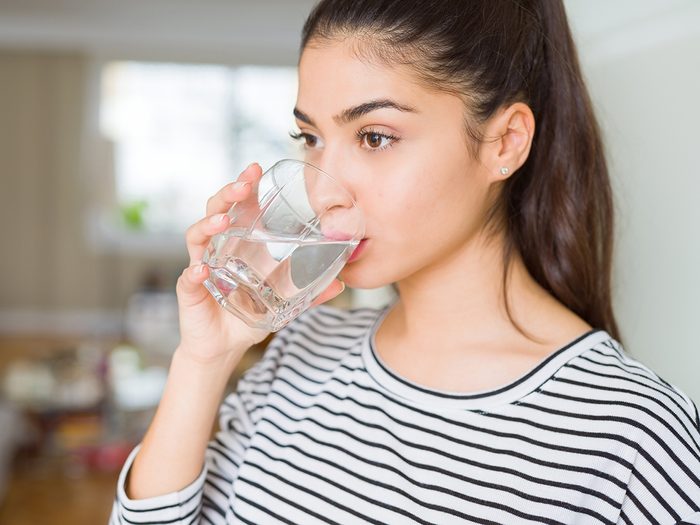
Eating for beauty begins with getting enough water
“Your skin is your biggest organ and it’s a reflection of what’s going on inside your body,” says Christy Brissette, a Toronto-based registered dietitian and president of 80 Twenty Nutrition. Drinking water might seem like a no-brainer, but most people don’t get enough H20 in their day and it can lead to sullen, dry skin, especially in the winter. If plain old water doesn’t float your boat, Brissette recommends making your own spa water. Adding citrus fruit, cucumbers or frozen berries can be a great way to infuse flavour and add some antioxidants to your drink. Because skin is 30 percent water, proper hydration can actually improve its thickness and density—a research finding published in the International Journal of Cosmetic Science. On the beauty diet, Brissette recommends aiming for 8 to 10 cups of water per day for healthy skin.
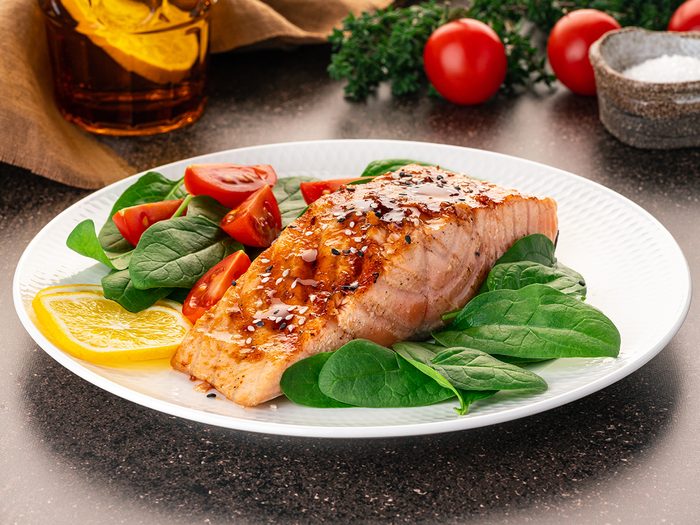
Omega-3 fatty acids
“People pile on the moisturizer but if they don’t treat their skin issues internally they won’t get that natural glow,” says Brissette. One of her tips to achieve luminous, healthy skin is to ramp up your intake of omega-3 fatty acids, commonly found in oily fish. “Omega-3 fatty acids help your skin to remove waste and lock-in moisture,” she says. “That’s why one of the tell-tale signs of not getting enough omega-3s is dry skin.” A recent study published in the Journal of Clinical Medicine found that in addition to improving the look and feel of your skin, omega-3s also provide some protective benefits when it comes to certain skin cancers. To tap the rejuvenating effects of these omega-3s, she recommends adding one or two servings of Atlantic salmon, Arctic char, or trout to your weekly diet. If you aren’t a fish fan, stock up on vegetarian sources of omega-3s by adding chia, flax, walnuts and hemp oils to your meals.
Read up on the healthiest fish you can eat.
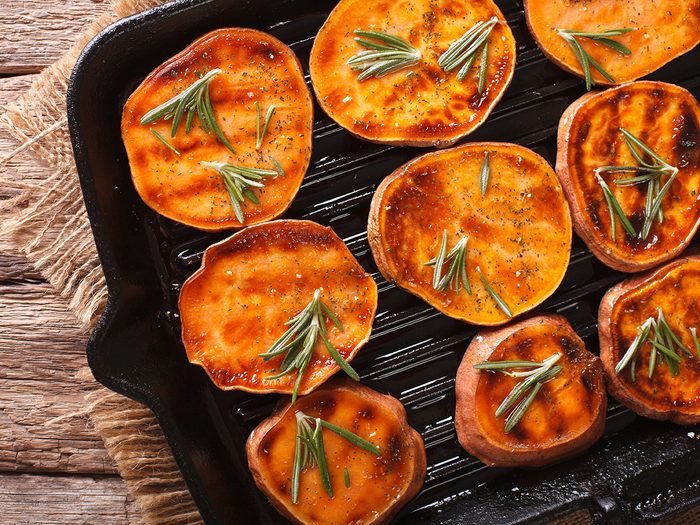
Eat sweet potatoes to clear up blemishes
When craving comfort food, people tend to reach for high glycemic index foods like refined carbohydrates—and then end up with inflamed skin to show for it. Conditions like acne can be exacerbated by foods that spike your blood sugar, says Brissette. To get your carb fix without sacrificing healthy skin, she recommends roasting up some sweet potatoes. This satiating side dish delivers a double-whammy of antioxidants and fibre, without taking your blood sugar on a roller coaster ride.
Here are more high-antioxidant foods worth adding to your cart.
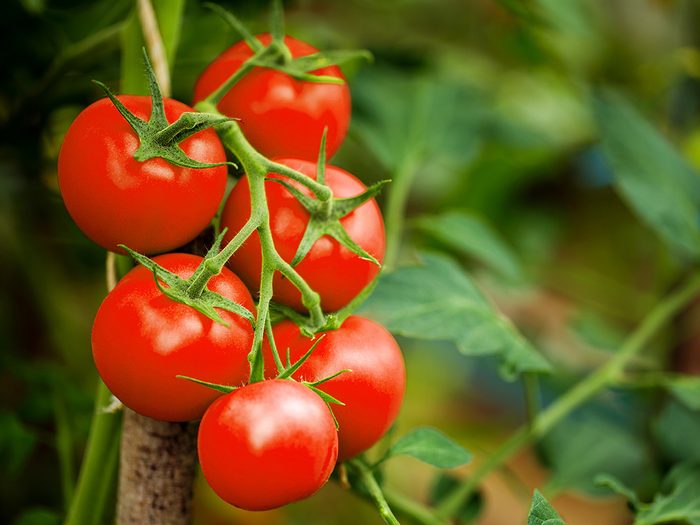
Eat tomatoes to protect your skin
In addition to heart health benefits such as a reduced risk for stroke, studies suggest that adding tomatoes to your diet can also save your skin. Lycopene, an important ingredient in tomatoes, has been shown to boost skin’s natural protection against UV damage—which, according to studies published in the Journal of Dermatology and Skin Science, is a major contributor to premature aging and skin cancer. While it’s no substitute for sunscreen, Brissette recommends increasing your lycopene intake by adding tomato paste (which boasts an even higher concentration of lycopene than fresh tomatoes) to soups instead of stock, or noshing on roasted tomatoes as a side dish. Brissette suggests pairing these tomato dishes with a heart healthy fat such as olive oil, which can help your body absorb lycopene.
Keep in mind these 10 sunscreen tips you should always follow to protect your skin.
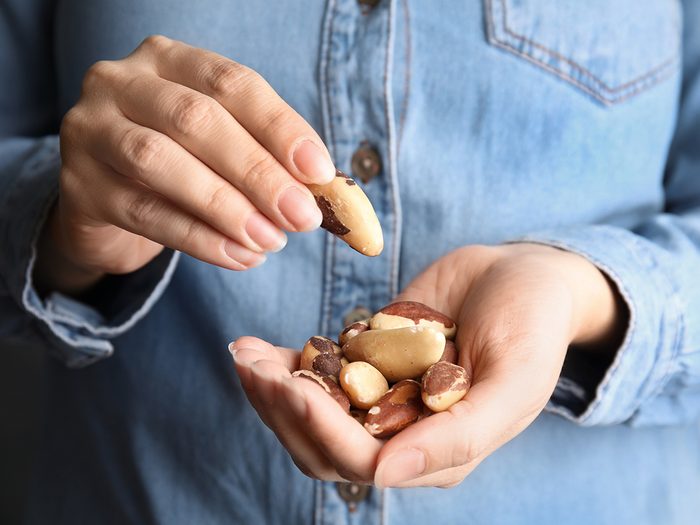
Eat Brazil nuts to avoid skin damage
A Brazil nut a day may keep the dermatologist away. Brazil nuts are rich in selenium, which, according to Brissette, can help protect your skin cells from damage—including skin cancer. Not only will they keep you looking younger longer, a study published in the scientific journal Nutrients found that Brazil nuts can also reduce your risk for heart disease. If you don’t like nuts or you’re allergic to them, you can also find selenium in dairy, eggs and seafood.
Don’t miss this expert advice on how to choose the best moisturizer for your skin.
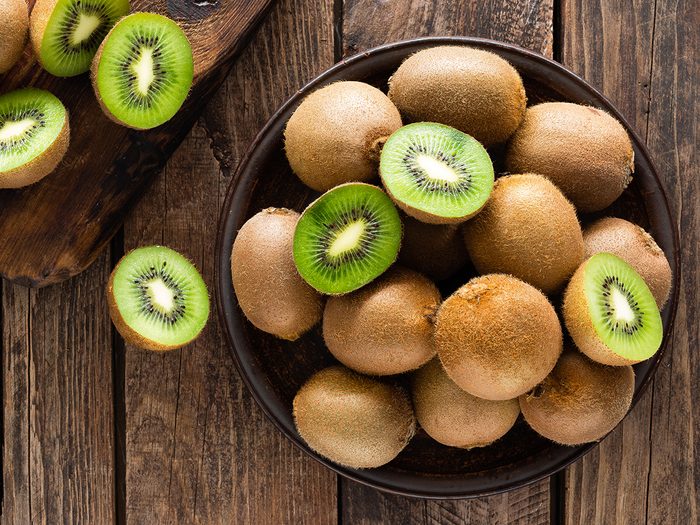
Eat kiwis for plump skin
Fruits and veggies that are rich in vitamin C help the body to produce collagen, a protein that promotes the elasticity of your skin and also plays an important role in healing. Brissette recommends kiwi over other vitamin C-rich produce because just one of these fuzzy fruits delivers 100 percent of your daily recommended intake of vitamin C—even more than the equivalent amount of orange. This tasty treat is also a good source of vitamin E and contains antioxidants, which may help protect skin cells from damage.
Learn to spot the signs you’re not getting enough vitamins.
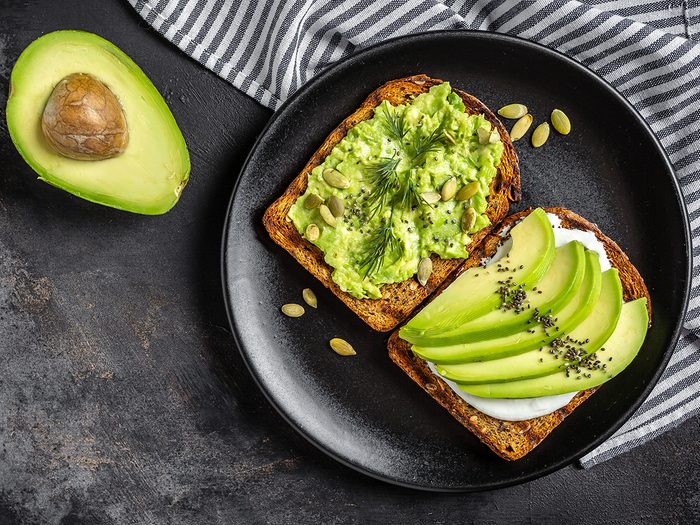
Eat avocados to prevent premature aging
If you haven’t jumped on the avocado toast trend yet, now’s the time—your skin will thank you. Avocados are high in fat, which, according to a study published in The Journal of Nutrition, helps your body to better absorb fat-soluble vitamins and phytochemicals found both in the avocados themselves and the fruits and veggies you eat with them. Avocados are also rich in vitamin E, which Brissette says promotes healthy skin in its own way. “Vitamin E protects the skin from free radical damage, so it helps slow down aging,” she says. “It also helps to widen the blood vessels to bring more oxygen and nutrients to the skin.” She suggests pairing vitamin E-rich foods with those containing selenium—they work together to protect against free radical damage. Other foods rich in vitamin E include wheat germ, sunflower seeds, spinach and almonds.
Find out the secret to avoiding dry skin in winter.
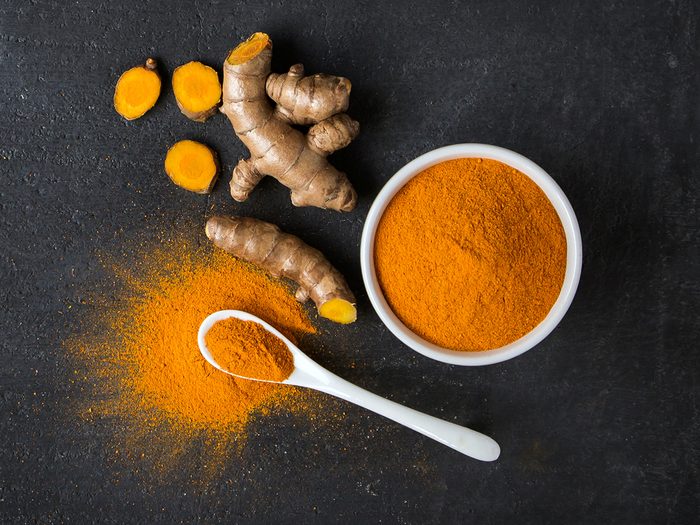
Cook with turmeric to avoid inflammation
This anti-inflammatory spice amps up the flavour of your veggie and meat dishes (not to mention smoothies and teas), and can also promote healthy skin thanks to its active ingredient, curcumin. A study published in the journal of the American Association of Pharmaceutical Scientists found that curcumin can moderate your risk for many health conditions such as cancer, cardiovascular disease and inflammatory bowel disease, and there is also evidence that it can aid in the treatment of inflammatory skin diseases as well as accelerate wound healing. Research published in the Cancer Research and Treatment journal suggests pairing turmeric with black pepper to help the body absorb its antioxidant compounds.
Now that you know how to achieve healthier skin with the beauty diet, find out how to read nutrition labels like a pro.